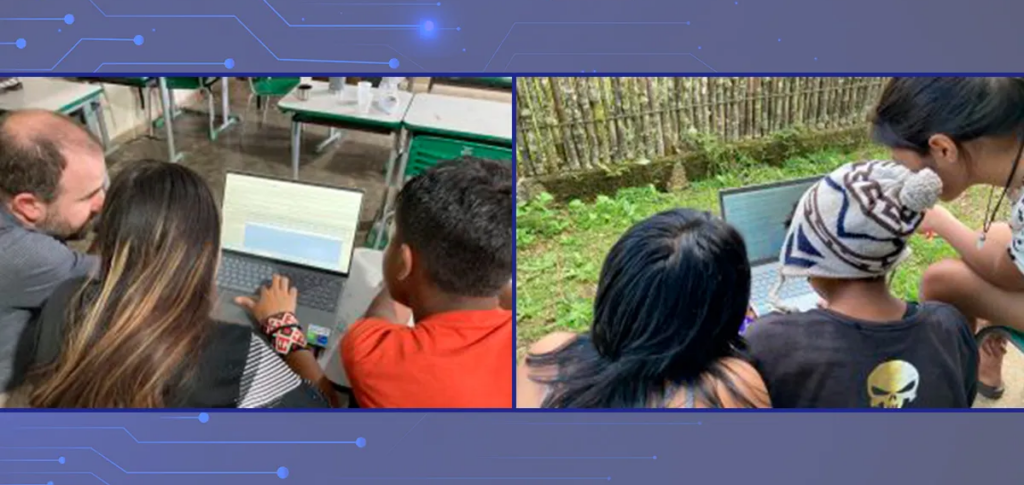Amidst so many cultural changes, more than two thirds of indigenous languages were lost along the way, while today many of them are increasingly weakened.
ADVERTISING
To help change this scenario, a joint USP project, through the Center for Artificial Intelligence (C4AI) and IBM Research, aims to employ technology Artificial Intelligence (AI) in strengthening Brazilian indigenous languages.
The initiative aims to create and develop tools that help the documentation, preservation, vitalization and use of these languages, always in partnership with communities of Indian people.
According to the researchers involved, the first research prototypes could be tested in the second half of 2023.
ADVERTISING
Through the area of Natural Language Processing (NLP), AI can help, for example, in the construction of speech-to-text conversion systems and vice versa, in the development of translation and vocabulary expansion tools, in improving linguistic collection and analysis programs, in addition to other technological advances that can be applied to the preservation of native languages.
The creation of keyboards and text completers for indigenous languages, as well as the use of computers and robots in the education of children and young people in communities, will also be explored in the project.
“We will act mainly on two fronts. One of them is to vitalize, that is, increase the number of young people who speak and write these languages. The second is aimed at strengthening indigenous languages that are already in a process of disappearance, which is why we are looking for ways to document them so that they can be maintained for posterity. There are languages, for example, that have only three speakers, all 70 years old. But the fundamental thing is to always work with indigenous communities and experts on the subject”, explains the deputy director of C4AI, Claudio Pinhanez, one of the project leaders together with professor Luciana Storto, from the Faculty of Philosophy, Letters and Human Sciences. (FFLCH) from USP.
ADVERTISING
Adapt technologies
The work underway at the USP Artificial Intelligence Center is divided into areas of interest. In each of them, AI is used in a specific way, always aiming to strengthen and use indigenous languages.
Researchers seek to adapt AI technologies to these languages, create tools to support linguistic work – for example, phonetic transcription systems, automatic translation, grammatical analysis and creation of digital dictionaries –, in addition to using these languages on social networks and in together with chatbots aimed at educating indigenous peoples – a pioneering effort.
Pinhanez explains that, today, there are no translators from indigenous languages into Brazilian Portuguese.
ADVERTISING
“If you put it in ChatGPT, for example, he invents a language out of nothing. It presents several words that appear to be, but are not indigenous. What we are developing is a joint construction, showing indigenous peoples what we can do and listening to what they want and need. Despite so many difficulties, they were the ones who came to us and brought us the existing demands. According to community leaders, the biggest concern is young people, who are growing up without even knowing their own language, including the ability to write. We show what can be attempted and what we can create. Whether this will solve it is another question. What we have seen so far is a very good response from the community we are working with, they are liking what is being proposed and directing the work according to their needs. It's a process. Technology has to adapt to their world and they have to learn about technology,” he said.
Partnership with indigenous schools
Currently, the project has a partnership with schools in the Tenonde Porã Indigenous Land, in the south of the city of São Paulo. Although children and young people in the community speak the Guarani Mbya language fluently, they still have difficulties in applying its written language. In this sense, the project provides weekly workshops with high school students and teachers so that writing and linguistic documentation tools can be explored and developed together.
“We are happy with the workshops that have been developed. These moments have been important for us to think about how technological tools can help us value our mother tongue, by supporting the development of writing, our knowledge and practices. Furthermore, we have reflected on the translation processes and the importance of using these tools as a political instrument to strengthen our ways of living”, states the leadership of the Tenonde Porã Indigenous Land.
The tools are being co-developed with the school's students and teachers and used in class in an experimental way.
ADVERTISING
Another objective of the project is to enable the continuous formation and development of communities by their own members, allowing them to learn and teach information technology, programming, AI and linguistics content, in addition to networking with professionals interested in contributing to the vitality of languages indigenous people.

The C4AI and IBM initiative is important because most indigenous languages in Brazil and the world are threatened with disappearing by the end of the 21st century. In addition to facing territorial invasion, the spread of diseases and the destruction of ecosystems, indigenous peoples suffer from the imposition of European languages, undifferentiated education and the intensification of relations with the non-indigenous world. The digital transformation with the internet, cell phones, online games and social media has discouraged many indigenous people, especially children and young people, from speaking and knowing their original languages in everyday life..
In this sense, AI can be seen as an ally of these people in the preservation and continuity of their cultures. With the use of new technologies, it is possible to confront the challenges and threats that indigenous languages face and guarantee their continuity for future generations.
The team involved in the project currently consists of around 20 people, including researchers, teachers, scholarship students, technical professionals and interns. The project also has a post-doctoral fellow, four undergraduate fellows and one technical assistance fellow, supported by a C4AI research project, which has support from the São Paulo State Research Support Foundation (Fapesp) . In addition, from IBM Research, a software engineer, a doctoral student and two undergraduate interns participate.
The initiative continues to actively search for teachers, professionals, students and indigenous students who are interested in joining the team. Furthermore, the idea is for the project to include indigenous people who work as teachers (at all levels), linguists, programmers, IT professionals and translators. C4AI and IBM are open to new partnerships and demands to expand the scope of this important work front.
(With Journal of USP)
Read also
* The text of this article was partially generated by artificial intelligence tools, state-of-the-art language models that assist in the preparation, review, translation and summarization of texts. Text entries were created by the Curto News and responses from AI tools were used to improve the final content.
It is important to highlight that AI tools are just tools, and the final responsibility for the published content lies with the Curto News. By using these tools responsibly and ethically, our objective is to expand communication possibilities and democratize access to quality information. 🤖




